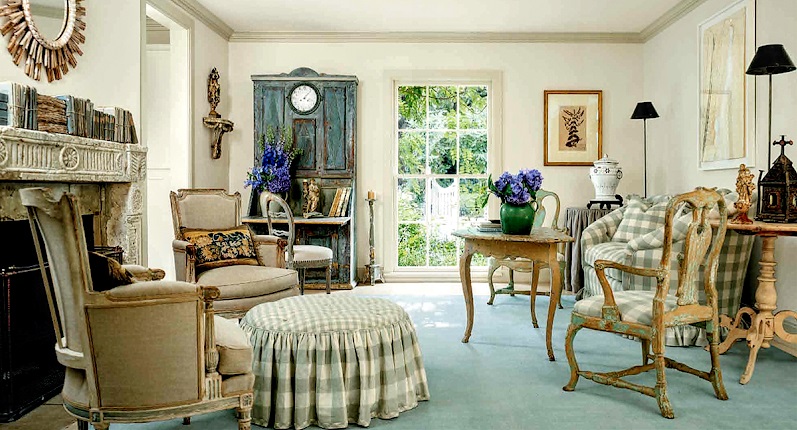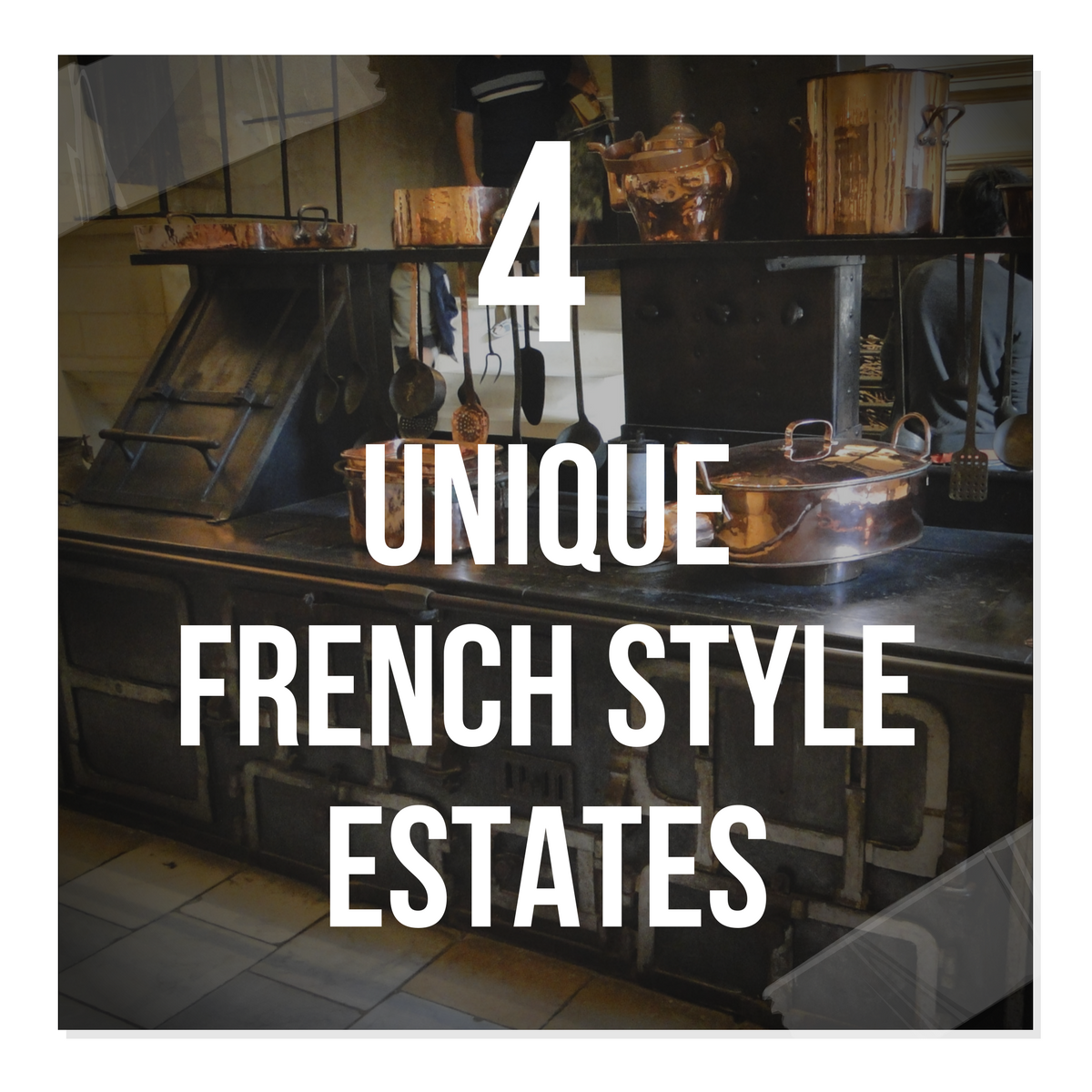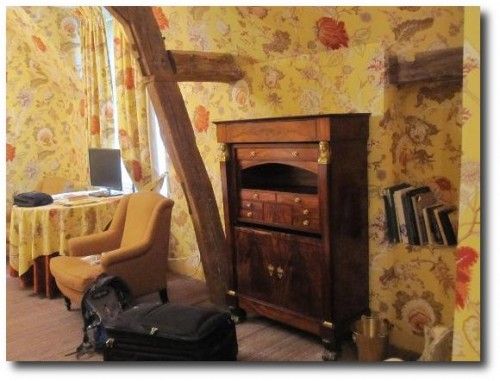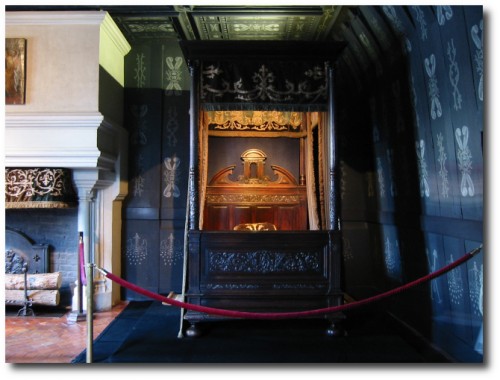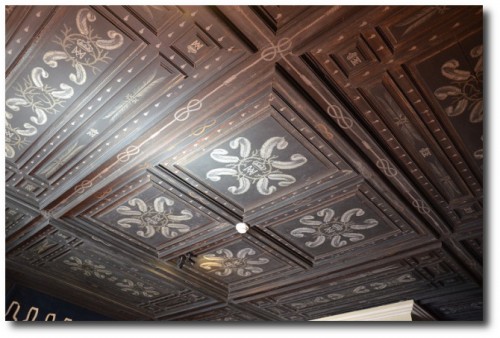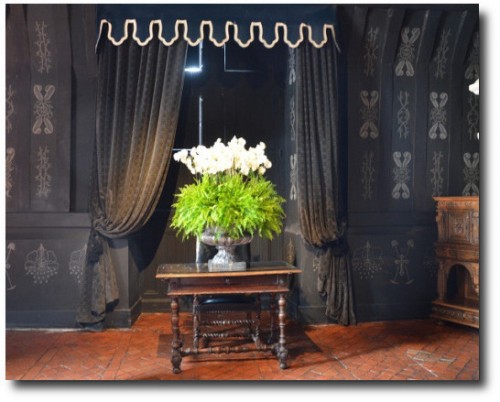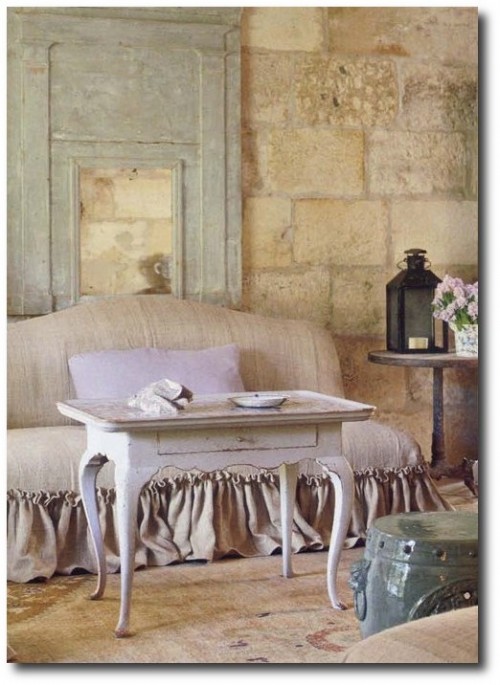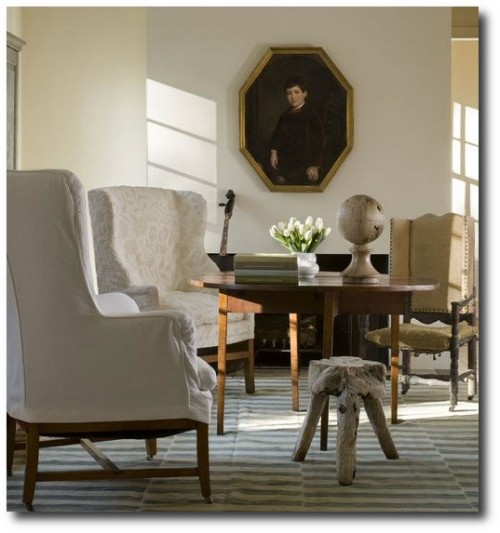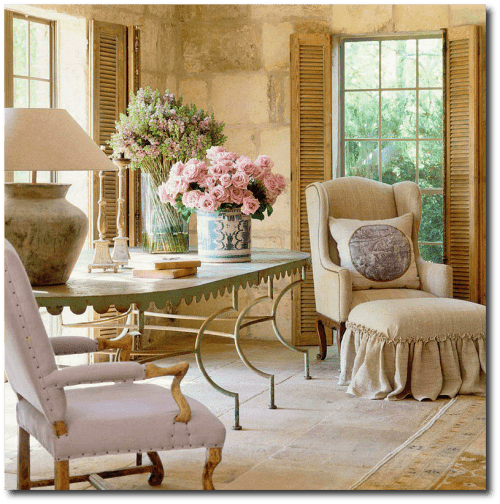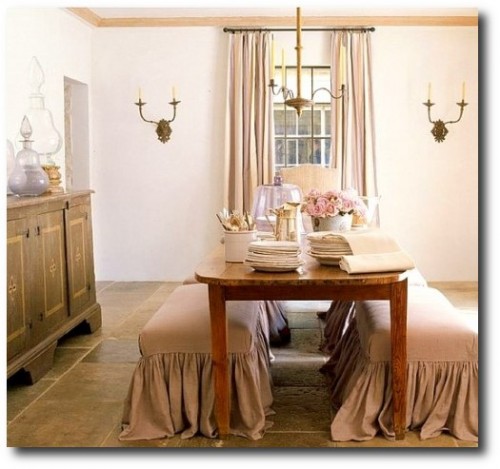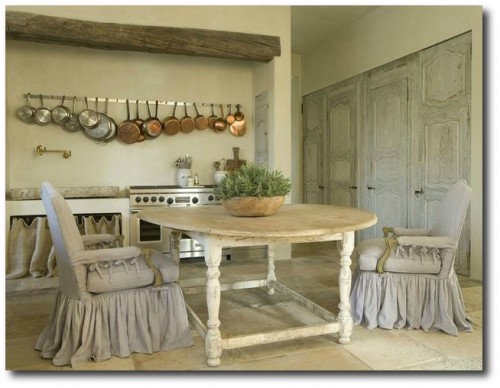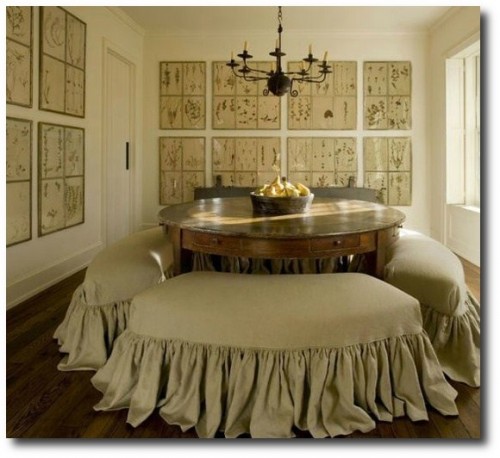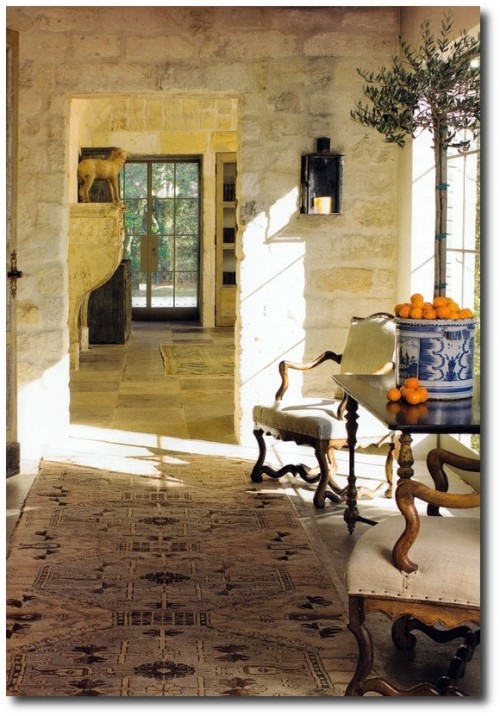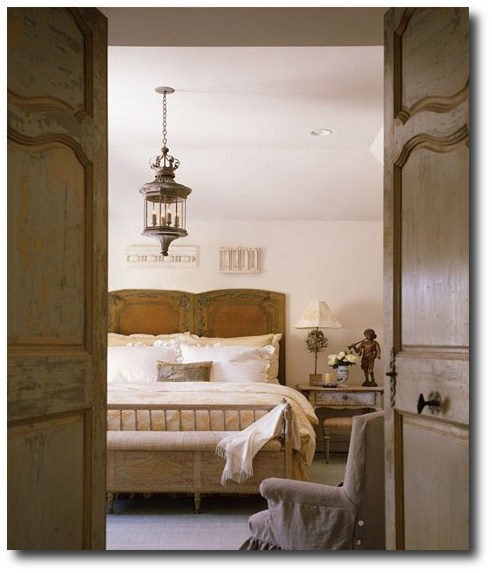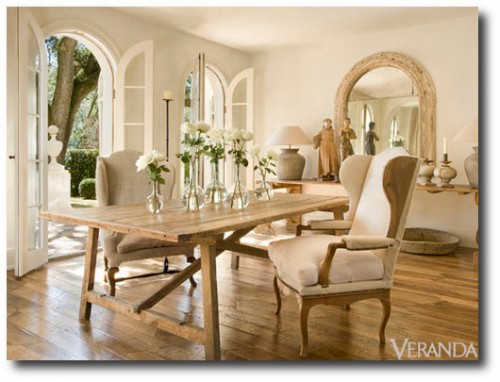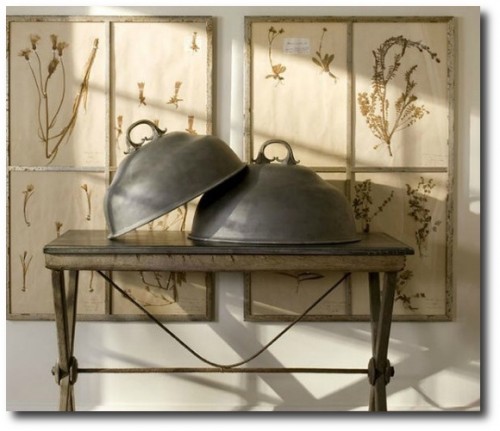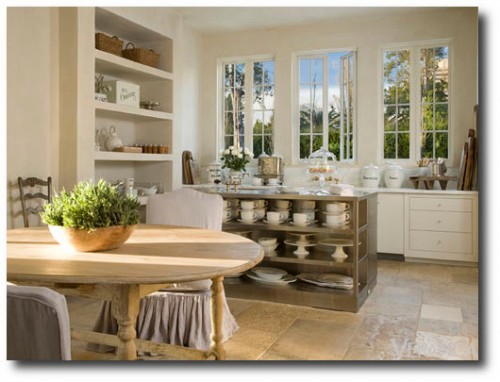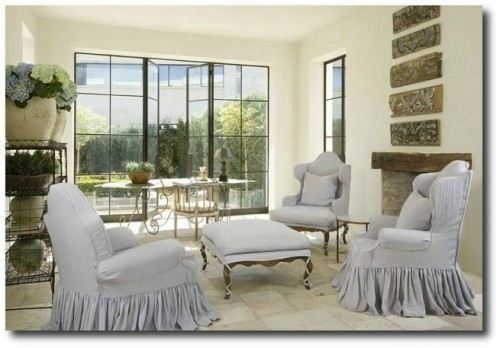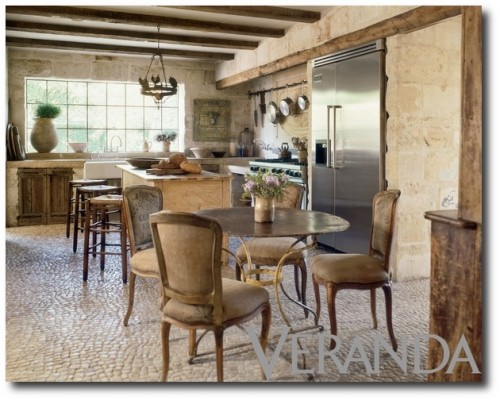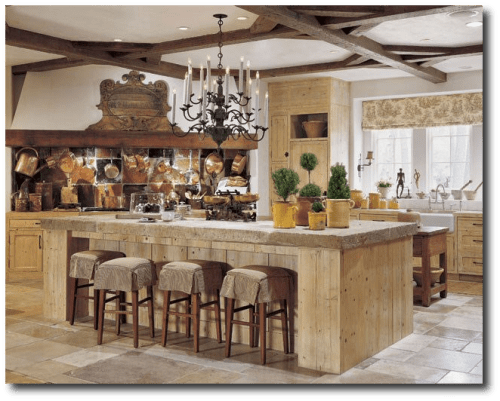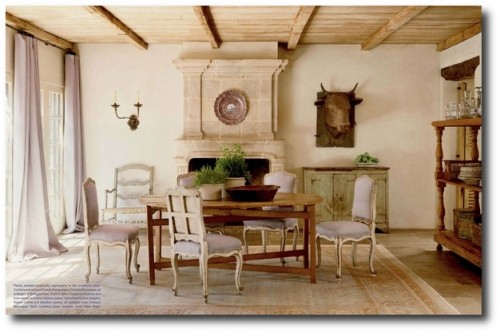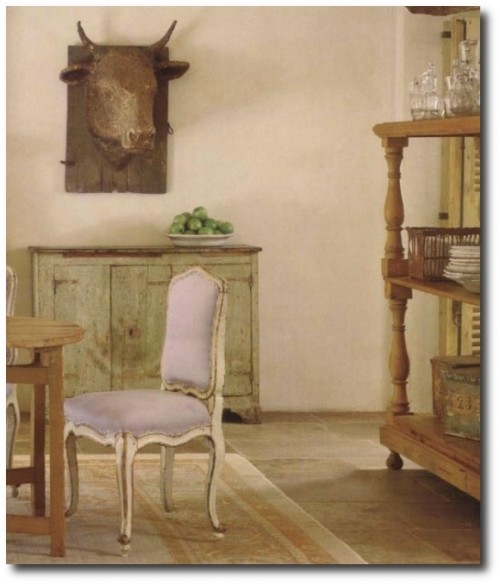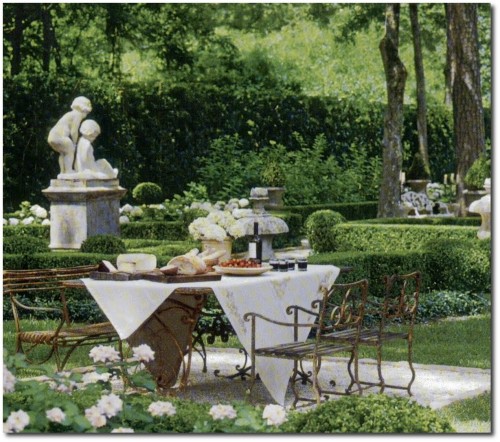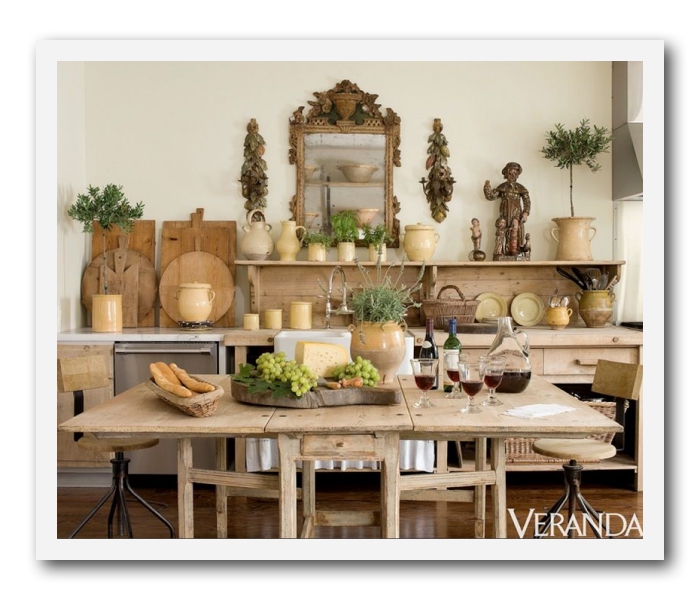
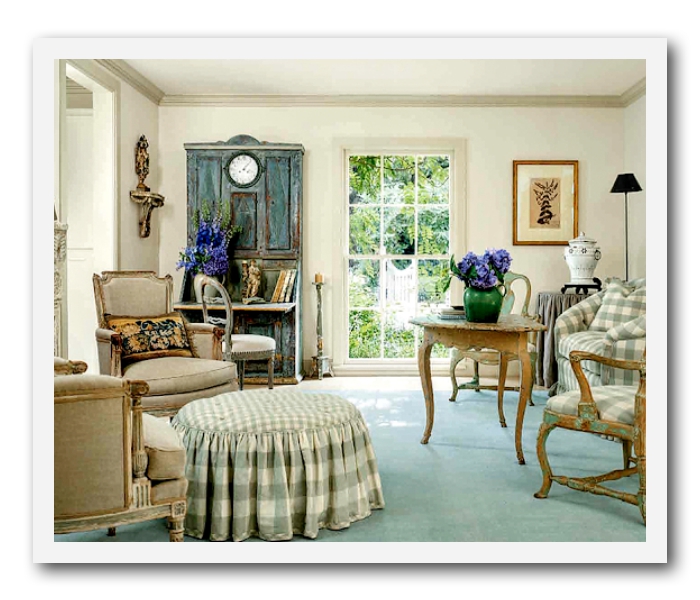
Veranda had an article asking European Designer Jane Moore her top tips for design. Here is what she said:
1. Tip From Jane Moore – The OPPOSITE EFFECT
Let your environment help you make decisions about your interior design.
” I have always lived in Houston, where it is very hot and humid. As a result, I always pick cool colors that come from nature—soft blues, greens, grays—because when I come in out of the heat, I want to be refreshed. ”
Why this design advice works is your outside environment plays a very major role in your life. If your missing the elements from the outside that you crave, bring them into the house which you spend the rest of your time. If you live in a cold climate, warmer accessories might be something to invest in. Perhaps velvet pillows in deep shades of rust instead of blue and green.
What do you think? Great tip?
2. Tip From Jane Moore – EDIT
As you mature in your life and design, edit to what you love the most, and remove the rest.
It can be hard to give up something that you spent a lot of money on earlier in your life, or a piece that is hard to find. As you get older, you find that the pieces that really don’t match your style can drag down the appearance of your home. The clutter shines a spotlight on things you don’t even like anymore.
Take a good hard look at the pieces you own. Showcase the nicest pieces in your home, and you will find your eyes are always drawn to them, than the pieces that you keep saying… “I need to get rid of that”.
“I started my career doing almost all English, but as I grew to love the Provençal and Swedish aesthetics, I let go of those English things, even though I still loved them.
“The same goes for people with a lot of bright, colorful pieces who want to transition to something serene and neutral.”
3. Tip From Jane Moore – FOR YOU ONLY
Buy For Yourself And Not For Someone Else.
Live in your moment, not in someone else’s.
“Those before us—grandmothers, mothers, friends—had their time to enjoy what they loved, but that doesn’t necessarily mean we have to love it, too.”
‘Oh, someday my daughter will love it, or my granddaughter will love it,’ Then I thought, ‘No. I love it, and if they choose not to have it in their homes someday, that’s all right.’
This happens all the time. You pick up something for someone else, and you think they will love it, but they never really do. It becomes wasted money, but your feelings get hurt in the process. Let other people hunt down their own treasures, as in the end, often times its the hunt that is thrilling. Even if you exactly match what they are after, most people don’t pull the plug on those finds, and you end up wasting your time and energy.
4. Tip From Jane Moore – INVEST
Save Your Money For What You Really Like
” Avoid buying what I call ‘fillers.’ Instead, buy only what you absolutely love, what you simply cannot live without. ”
Isn’t this true for buying in general? We tend to come across something locally, and we just purchase it, even though it’s not exactly what we are after. Instead, put the items that really match your vision in your online cart, or hold back until you find exactly what you are after. Highly edited interiors show a distinct style. When you look at the piece, and your not really sold out for it, eventually it will be discarded after you get tired of it anyhow.
